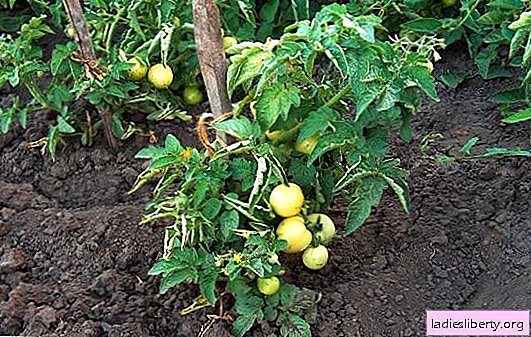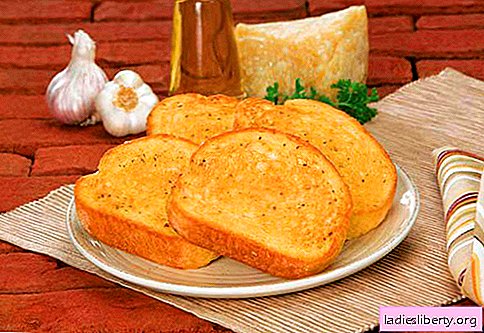
It would seem that everyone knows that during cooking, it needs to be salted. Not everything is so simple - food must be salted correctly in order to cook deliciously. Even the quality and type of salt can dramatically affect the final result. But how to calculate the proportions? How to salt minced meat? Is there enough salt for the dough? At what stage should salt be added to soup or, for example, to roast?
All these questions often concern inexperienced housewives. Even in recipes they write: "Salt to taste." Many do not understand how to do it right - everyone has different tastes. Sometimes it is not even indicated at what stage of the preparation of a dish it needs to be salted. Let's look at all the nuances.
General recommendations
First you need to have an idea of the general rules for the use of salt in food. This is the minimum knowledge base of each housewife. Below we will consider in more detail how and when to salt meat, fish, vegetables, dough, pasta, soups, porridge. You need to know what to do if the dish is still oversalt, how to save it. It is equally important not to overload the food initially - we will tell you how to adhere to this rule.
So, let's start with general recommendations:
• If the dish already contains a salty ingredient, add salt very slightly. It is better to slightly saline than to save food later. For example, hodgepodge - we act with caution, it already has cucumbers or smoked pork ribs that already contain salt.
• Hot dishes seem more salt than they really are. If there is such an opportunity, try in a slightly cooled form.
• Salads are salted just before serving. If you seasoned it with mayonnaise or some other sauce - salt, most likely, will no longer be needed.
• When preparing soup for salt, try the broth, then you can add more seasoning as necessary and adding other ingredients.
• When you decide to try a finished or almost ready dish for salt - do this no more than 2-3 times. The taste buds are slightly dull, the salt does not feel so bright, you risk overdoing it.
• Remember that there are many types of salt and its producers. As a rule, each housewife chooses one type for cooking in order to correctly calculate the proportions.
Types of Edible Salt
As mentioned above, there are several types of salt. They differ in production technology, quality, size and color of crystals, shades of taste. Its use in cooking depends on the type of salt.
Let's look at the most basic:
• Extra. Or it is also called "Table Salt." It is extracted from underground rocks, then it undergoes industrial processing, all impurities except sodium chloride are removed. This type of salt is completely useless, in addition, fluid is retained in the body, which can lead to edema.
• Iodized. If you have an enlarged thyroid gland, you live in a village with polluted air - this salt will suit you. As the name implies, this type of salt is rich in iodine.
• Cook. It is also called "Stone". But this is a small misconception - both types of salt are produced from the same raw materials, but in a different way. Salt is cleaned industrially, and rock salt is not cleaned at all, it is only slightly clarified - this is a natural product. Salt is completely useless to humans, as "Extra" retains fluid in the body.
• Marine. This type of salt is well enriched with minerals, created by evaporating sea water with minimal purification - all useful properties are preserved. Sea salt has a rich rich taste, it is added in smaller proportions than other varieties. Shelf-life Unlimited.
• Black Few people know about this type of salt. It is rich in iron, iodine, sulfur, potassium and other trace elements. It practically does not retain fluid in the body. Of the minuses - an unpleasant taste, a high price.
• Dietary It contains magnesium and potassium, but there is almost no sodium chloride in it. This salt is recommended for people with various chronic diseases.
Remember that this is only general information. If you have any diseases, metabolic disorder, and a tendency to swelling - before choosing the right salt, go to a specialist doctor, do not risk your health.
We adjust the taste of the dish
It's not about how to make food more salty. In fact, with the help of salt, you can influence the taste of food, making it, for example, sweeter, enhance aroma or get rid of bitterness. Did you know about that? If not, read below:
• The first trick is useful for coffee lovers. If you add a pinch of salt to black coffee before brewing, the taste will be less bitter. Also with cream, if they are slightly salted, the taste will be more interesting and pleasant. By the way, you can conduct your home experiment: first put something bitter on the tongue, just a little bit, then put the salt - surprisingly, right?
• Add sweetness. Yes Yes exactly. Salt can make food more sweet. For example, take grapefruit, its flesh is sweet, and the peel is bitter. They clean it off to get to a delicious sweet pulp. If the peel, or rather on the white partition, slightly sprinkled with salt - it will not only cease to be bitter, but even become sweeter.
• Salt can enhance aroma and taste - everyone knows that. But if, for example, salt a melon - you will be pleasantly surprised. Be sure to try it.
Now let's find out how to properly salt various foods during their preparation. If you remember these rules, you will easily determine the degree of salinity, the food will turn out to be really tasty and right, the cooking process will be greatly simplified. So, let's begin.
When and how to salt fish
With fish, everything is quite simple.
The most important rule is to salt before the start of thermal treatment. Ideally, it is rubbed with a large amount of salt, it is not sprinkled, it is not salted, like other products, namely, it is rubbed with salt by hand.
For one kilogram of fish, you usually need three full teaspoons of salt. If you cook fish soup, add more - the other ingredients will absorb some, the soup may turn out to be slightly fresh.
When and how to salt meat
The meat itself is not fresh, it already has its own shades of taste. Therefore, he needs less salt than fish. There is a main problem - how not to salt the meat? As a rule, this is what happens in inexperienced housewives. It is important to focus on the method of thermal processing:
• If the meat is baked, one teaspoon is spent on one kilogram, if you cook home-made minced meat for fried cutlets, half a serving of salt is used per kilogram of minced meat.
• Cooking fried steak? It is salted after cooking while it is hot. Never salt the steak just before starting the heat treatment. You can do this in an hour - the flesh will begin to secrete juice, and during this time it will have time to soak back - the steak will turn out to be moderately salty and soft.
• Boiled meat is salted after boiling water and removing foam. Salt crystals penetrate deep into the pulp, the taste will be right. If boiled meat is salt in the end, it will not have time to absorb the necessary, the middle will remain fresh.
Salt the baking correctly
There are two types of baking: fresh and sweet. Salt is added to each of the species, or rather, to the dough itself. As mentioned above, salt can make food sweeter if proportioned and the ingredient is suitable. To make a sweet dough, a literal pinch of salt is usually added. If the yeast dough is two, half a teaspoon for every kilogram of dough goes to the puff without butter. Unsweetened pastries are a little different. We try to make the dough fresh, put the minimum amount of salt, but add the norm to the filling - the taste of the finished baking is balanced.
Other dishes
Now it's time to talk about other dishes, here we will discuss everything briefly.
It is important to know to understand the general principles, and you will not be mistaken:
• Porridge. If you cook in milk, add less than in cereals boiled in water. Salt is put in any cereal at the end, when everything is almost ready - this is the guarantee of an even distribution of taste. We focus on the initial taste of cereals. For example, buckwheat is already slightly brackish, it is less salted, literally two pinches per quarter kilogram. This proportion emphasizes its taste. But the rice is salted differently, per teaspoon will take two teaspoons.
• Vegetables. There is one most important rule - salt in the end. If you add salt to vegetables immediately, there is a chance that they will become tough. Although, there are slight deviations. For example, eggplant is always soaked in salt water or simply sprinkled with salt before cooking, we remove the bitterness. Remember the coffee experiment? Here is another confirmation. Salt the potato after about a quarter of an hour from the start of boiling, that is, when it is almost ready. For every kilogram of potato, about fifteen grams of salt is consumed. Salads, caviar and sauces are salted after processing, in finished form.
• Soup. We focus on the broth or salt at the very end, when all the ingredients have already been cooked. Soups are different, but there is a basic rule - about 10-12 grams for each liter of soup.
• Pasta and dumplings. There are no special tricks, the main thing is to salt after the water boils. For pasta, as a rule, this proportion works - about 10-12 grams per liter of water, dumplings and dumplings - 5 grams for the same amount of water.
What to do if overcrowded
It happens that, despite all the knowledge and skills, dishes are overloaded. It can be banal forgetfulness, carelessness. There are several ways to save a salted meal:
• To remove excess salt from the meat, add fresh sauce to it, such as cream or flour. "Sauce hides a thousand flaws" - an old chef's saying.
• If you add fat sour cream to the dish, it will become fresher in taste. However, this works with those dishes where sour cream is, in principle, appropriate. For example, you can make gravy out of it, or just add it to the soup or stew the ingredients with it.
• A fresh side dish will help you out. For example, you have salted the minced meat - add unleavened zucchini or grated potatoes to it. You will not only save your meatballs, but also add some variety to the menu.
There are many tricks to get rid of too salty taste. But it’s better to adhere to the rules and maintain harmony, apply salt in the correct proportions so as not to save food, but immediately cook it tasty.
Remember, the cooking process is a creative process, do not be afraid to experiment, try new things. Cooking is our experience gained by trial and error. If you know when and how to salt food, you can not be distracted at this moment, everything will happen automatically - you just have to create culinary masterpieces and try new things.
No wonder the famous chef Gordon Ramsay says: "A person should know about food no less than about mathematics or his native language."











